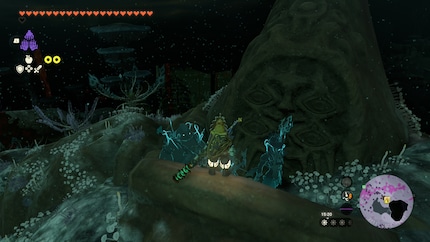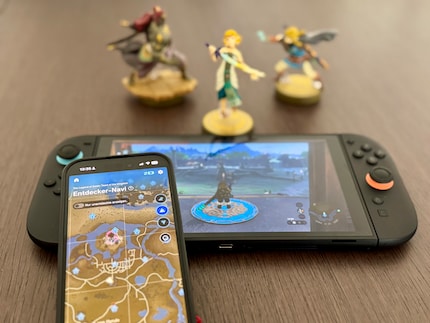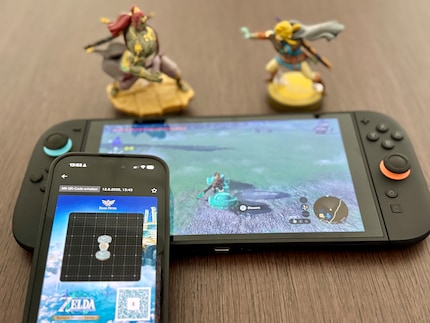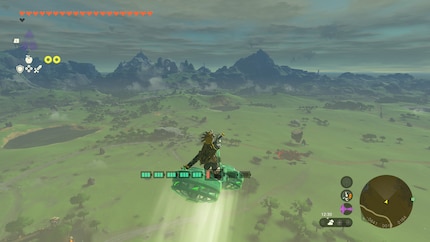
News + Trends
Nintendo Switch 2: These Switch 1 games will receive free or paid upgrades
by Domagoj Belancic

Last week upgrades for The Legend of Zelda: Breath of the Wild and The Legend of Zelda: Tears of the Kingom dropped on the Nintendo Switch 2. Although these are impressive from a technical point of view, Nintendo’s pricing leaves an uneasy feeling.
In the last week, multiple Switch 1 games have been freshened up for the release of the Nintendo Switch 2. If you want to see which titles this includes, my colleague Domagoj has compiled an overview here:
Unlike the free improvements for the 2D spin-offs The Legend of Zelda: Link’s Awakening and The Legend of Zelda: Echoes of Wisdom, Nintendo’s asking players to pay for the upgrades to the open-world Zeldas. If you already own the game on the first Switch, the upgrade costs around 10 francs or euros. If you buy the Switch 2 version new, it’s around 80 francs or euros. Reason enough to take a closer look at the Switch 2 versions of both games.
When I start my old savegame in Tears of the Kingdom on the Switch 2 for the first time, I’m amazed. I see protagonist Link with a crisp sharpness that I’m not used to. A few seconds later – as I familiarise myself with the controls - the next «wow» moment comes. Although I’m in the depths beneath Hyrule, I can navigate the gloomy environment so effortlessly – something I’m not used to from the first Nintendo Switch. And before I knew it, I was exploring for hours.

The same can be said for Breath of the Wild. There, I head straight into one of the most problematic areas: the Korok forest. Here too, the graphics look high-contrast and what jerks and stutters on the Switch 1 runs at a stable 60 frames per second (FPS) on both the TV and the handheld.
That’s why I can fully relate to the euphoria of fans in the following promotional video from Nintendo:
I was also pleasantly surprised at first by the fluidity of what was happening. In addition to the higher resolution, HDR support and smoother frame rate, the loading times are faster.
I want to test how good the improvements actually are, so I’m using my 2017 launch console to do so. Loading the same Breath of the Wild game state takes twelve seconds on the Switch 2, compared to 19 seconds on the first Switch 1 model. Tears of the Kingdom is a long time coming. Where it takes 19 seconds for me to load a save state on the Switch 2 version, it takes a full 27 seconds on the Switch 1. Teleporting to a shrine is also much quicker. The upgrade saves you time.

Otherwise, they’re the same successful games as I know them. There’s no new content in the games themselves, but in the accompanying Zelda Notes app for smartphones.
Unlike the free upgrades for Switch 1 games, there’s now an accompanying app for The Legend of Zelda: Breath of the Wild and The Legend of Zelda: Tears of the Kingdom in the form of Zelda Notes for smartphones. Strictly speaking, it’s not a new app, but a sub-section called Zelda Notes in the existing Nintendo Switch app. To use the feature, I first have to activate it in the game options and a QR code is then displayed on the screen, which leads to the app download.
This is what you can do with Zelda Notes:
Although the options are varied, they remain pure gimmicks. Only the audio memories sound like a nice feature with additional content for Zelda fans. For most people, looking at their own or global data – apart from a curious glance – will hardly be worth mentioning. The same goes for the different bonuses. These are also nice, but not essential for the full experience of the game.

The Autobuild Sharing function is reserved for The Legend of Zelda: Tears of the Kingdom. I use it to share my creations with the whole world or download other people’s buildings via a QR code.
I can imagine that such a function would’ve been particularly well received when the game was first released. And custom creations still make sense today – the only question is how many players actually make use of the function. Especially because there’s no gallery within the app that shows me particularly popular buildings, for example. I have to have friends send me the QR codes or look them up on the internet.

Although I’m a huge Zelda fan, I have a hard time with Nintendo’s sales policy. Of course, optimising old games is optional and at the end of the day, I’m happy to be able to play The Legend of Zelda: Breath of the Wild and The Legend of Zelda: Tears of the Kingdom smoothly and have ultra-sharp visuals.

But when I see how a free upgrade finally turns the jerky monster Pokémon Scarlet into a playable game, the price tag of ten francs or euros for Breath of the Wild and Tears of the Kingdom leaves me questioning. From my point of view, the Pokémon upgrade has actually provided a lot more. The functions of the companion app seem like token exercises to justify the upgrade price. The only consolation is that if you subscribe to the Nintendo Switch online expansion pack you’ll receive the upgrade «free of charge».
The upgrades for The Legend of Zelda: Breath of the Wild and The Legend of Zelda: Tears of the Kingdom are available for the Nintendo Switch 2. The game was provided to me by Nintendo for testing purposes.
Note: the following conclusion and star rating refer to The Legend of Zelda: Tears of the Kingdom - Nintendo Switch 2 Edition. I’d also give The Legend of Zelda: Breath of the Wild – Nintendo Switch 2 Edition the same rating. Many points of the two upgrades overlap._
The Legend of Zelda: Tears of the Kingdom is finally running at a stable 60 fps and a high resolution. This has made it the best version of the game so far. One of the best open-world games of recent years awaits (re)beginners.
And if that’s not enough, there’s also an official app from Nintendo on top. It’s no more than a few nice gimmicks, though.
If you’ve never played Tears of the Kingdom, you should definitely reach for the Switch 2 version. I also recommend the same for Zelda fans who want to rediscover the well-known world – despite Nintendo’s painful sales policy.
Pro
Contra
I wrote my first text about video games when I was eight years old. I haven't been able to stop since. The rest of my time is spent on my love for 2D husbandos, monsters, my cats and sport.
Which films, shows, books, games or board games are genuinely great? Recommendations from our personal experience.
Show all
Review
by Domagoj Belancic

Review
by Michelle Brändle

Review
by Domagoj Belancic